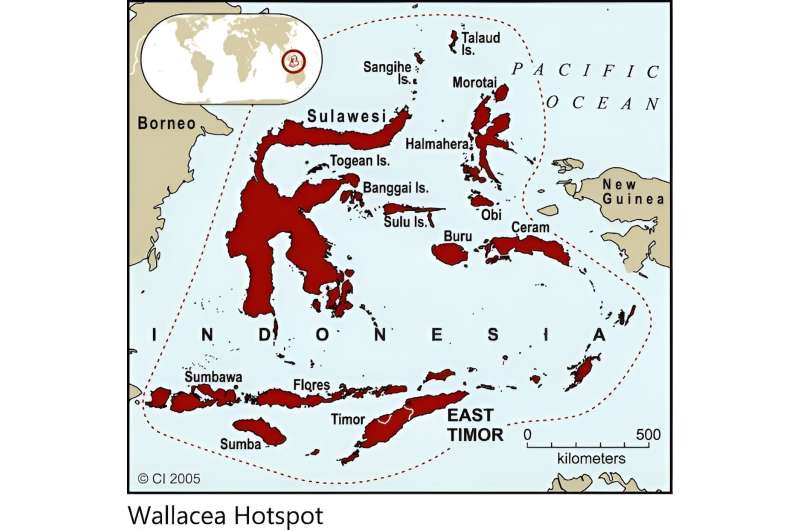
Wallacea is a fascinating region of both land and sea. Spanning approximately 338,000 square kilometers within Indonesia, it is home to a rich diversity of animals and plants, with hybrid species from both Asia and Australia/Papua regions.
There you will find hundreds of bird species, small to medium-sized mammals, primates, reptiles, and various plants—some of which are unique and found nowhere else on Earth.
Take a look at incredible species such as the komodo dragon, anoa, tarsier, babirusa, and giant bees. These animals are native to the scattered islands of Wallacea. That’s before you even start to explore Wallacea’s marine wonders as a part of the Coral Triangle, an area well known for its extraordinary marine biodiversity.
From palm oil plantations in West Sulawesi to land clearing and development, changes driven by human activities continue to flourish in the region.
My research has found Sulawesi lost approximately 10.89% of its forests during the period from 2000 to 2017—equivalent to around 2.07 million hectares.
During that time, West Sulawesi and Southeast Sulawesi experienced the highest rates of deforestation, losing both 13.41% and 13.37% of the forest cover.
Over the past ten years, numerous companies have flocked to small islands in Maluku and around Sulawesi. These companies have cleared forests and other ecosystems to make way for palm oil, cocoa and chocolate plantations.
Nickel mining also became a prevalent industrial activity in these areas, due to growing demand for nickels as a raw material for electric vehicle batteries. Wallacea is home to the world’s largest reserve of nickel.
Nowadays, miners are excavating lands in many parts of Sulawesi and its neighboring islands without adequate environmental measures. Some miners even dispose of their tailings—waste materials leftover after mining—into the ocean.
Alongside mining and plantations, the Wallacea is buzzing with National Strategic Projects—infrastructure projects prioritized by the Indonesian government.
There are more than 40 infrastructure projects underway, including dams, roads, railway systems, oil and gas initiatives, and many others.
The pace of development is truly striking and its effects to environment is so apparent.
In the ocean, valuable ecosystems like coral reefs have suffered extensive damage as a result of overfishing and destructive practices.
On land, massive deforestation has caused a reduction in bird species diversity as well as put monkey and tarsier populations at risk due to massive deforestation. Furthermore, deforestation has contributed to a decline in plant biodiversity.